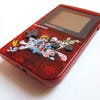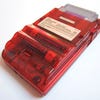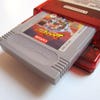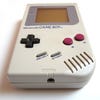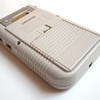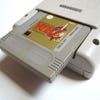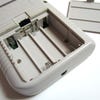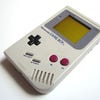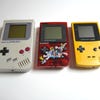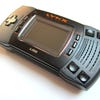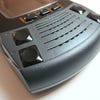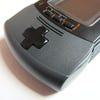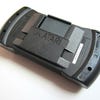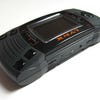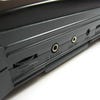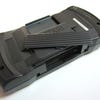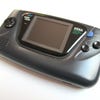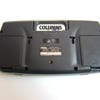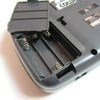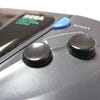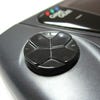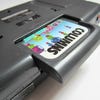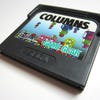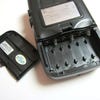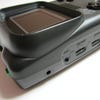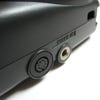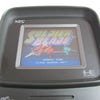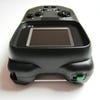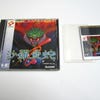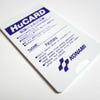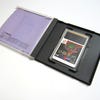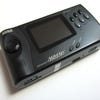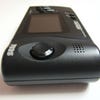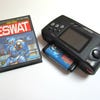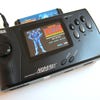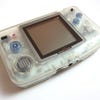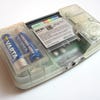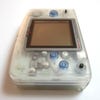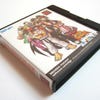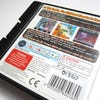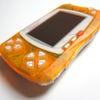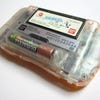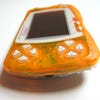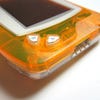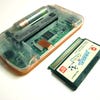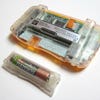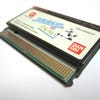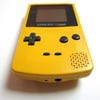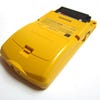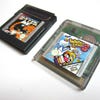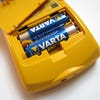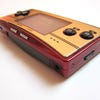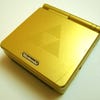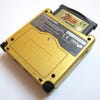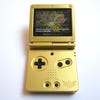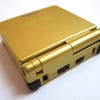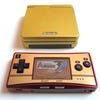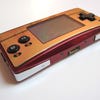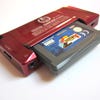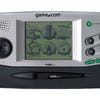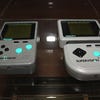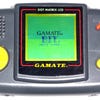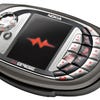The ultimate retro handheld collectors' guide
Looking back at the pre-smartphone era of portable gaming.
The rise of smartphones and tablets has subtly altered the definition of portable interactive entertainment. Once the sole preserve of console makers such as Nintendo, Sega, Atari, NEC and SNK, control of the "mobile gaming" market is slowly but surely being usurped by the likes of Google and Apple.
Gaming on the go used to be about AA batteries, tangled link cables and blurry screens, but all of these elements have now become things of the past; easily-misplaced cartridges have slowly given way to more convenient downloads, low-resolution displays have been superseded by vibrant HD panels and multiplayer mobile gaming now means taking on the entire world rather than the obnoxious kid next door. In so many ways, portable players have never had it better.
But then nostalgia hits. You never forget the time you scored your first Tetris on the brick-like Game Boy, or when your trusty Game Gear saved that dismal family holiday from being a total failure. Like so many retro relics, vintage handhelds have their own distinct quality - possibly even more so than old home consoles, thanks to the fact that they're more tangible. Countless hours will have been spent cradling these micro-marvels on boring bus trips and that will have created bonds that continue to hold firm with many gamers even today.
Of course, for those who weren't around to experience these systems first hand, there's the allure of investigating an age which now seems like a distant memory; an era before touch screens and accelerometers, before rechargeable batteries and devices you could slip effortlessly into your pocket without having to own a pair of MC Hammer's cast-offs. While these machines may be obsolete from a technology standpoint - having been overtaken by mobile hardware which is not only vastly more powerful but also far more portable - they continue to attract interest among dedicated collectors and passionate retro lovers.
The pioneer: Nintendo Game Boy
Nintendo had already dabbled in portable gaming prior to the development of the Game Boy at the end of the '80s. Famed engineer and designer Gunpei Yokoi took affordable LCD technology and created the Game & Watch range, many of which were loosely based on Nintendo's coin-ops of the time. Enforcing what Yokoi termed "lateral thinking of withered technology" - basically taking existing and freely-available tech and using it in a unique manner - Nintendo was able to start out on its path to dominating the handheld market.
The Game Boy was designed with these same principles in mind; it boasted a monochrome LCD screen at a time when illuminated colour displays were available, yet this shortcoming proved to be its greatest asset - colour displays draw more power, as do screen lights. While rival systems consumed batteries with a vengeance, Nintendo's portable could last as long as 20 hours on a single set of four AAs.
"The Game Boy shares many similarities with the Wii," says Nintendo Life's Thomas Whitehead. "It wasn't the most powerful system of its time, but it offered something that rival formats didn't - true portability and excellent battery life. Both of these factors proved to be more important to players of the period than colour screens and 16-bit processors."
And then of course, there was the software. The Game Boy shipped with Alexey Pajitnov's Tetris, perhaps the greatest pack-in title for any system ever - with the possible exception of Wii Sports. It didn't end there, though - Super Mario Land, The Legend of Zelda: Link's Awakening, Castlevania II: Belmont's Revenge, Pokémon, Metroid II: The Return of Samus, Donkey Kong GB... throughout the system's considerable lifespan, it was graced with more than its fair share of classics.
Nintendo loves revising its hardware, and produced two variants of the monochrome system: the Game Boy Pocket in 1996 and the Japan-only Game Boy Light in 1998. Both showcased improved, less blurry screens and more meagre power demands - the Pocket required just two AAA batteries while the Light used two AAs.
The Game Boy's amazing popularity means that it's an easy system to collect for today. Second-hand consoles are abundant and loose games are also easy to come by - however, Nintendo's historical penchant for cardboard packaging means that you'll find few mint condition boxed titles these days. As with all vintage hardware, there are provisos to consider.
"The original model suffers from screen problems," explains Whitehead. "The connector ribbon used to link the display to the motherboard works loose over time, which leads to blank lines appearing on the screen. The Pocket is a better choice if you're looking to start collecting, as it's smaller and less hungry on batteries, but it lacks the satisfying heft of the original 'brick' model - and that green screen has a quality all its own, despite the blurriness."
16-bit power In your pocket: Atari Lynx
The Atari Lynx has the distinction of being the first portable games system with a colour LCD display and was actually prototyped by developer Epyx - who branded it the "Handy Game" - before Atari stepped in to assist with hardware production and marketing. Launched in 1989 - the same year as the Game Boy - the Lynx offered 16-bit gaming on the go and a unique ambidextrous control layout. These features couldn't help it overcome Nintendo's humbler hardware, which retailed for significantly less and hit the market with a more compelling selection of software.
Atari released a sleeker, more appealing version of the console - dubbed Lynx 2 - in 1991. The revised system had a less blurry screen, better battery life and a much lower price - almost half that of the original model at launch. However, by this point it was too late; Sega's Game Gear had been released and slotted neatly into second place behind the incumbent Game Boy. Atari could never have been described as a financially stable company at this point in its life and it stumbled from the lukewarm commercial performance of the Lynx headlong into its next disastrous venture: the "64-bit" Jaguar. The underrated portable was soon forgotten, but it left behind a considerable legacy.
"The Lynx may not have been as well supported as either the Game Boy or Game Gear, but the handheld's 16-bit processor did help Atari to bring a dazzling array of top-notch arcade conversions to the device," says Games Asylum's Matt Gander. "These conversions were the format's bread and butter and many - such as S.T.U.N. Runner, Xybots and to a lesser extent, Double Dragon - showed what the Lynx could do when tickled in the right places."
It may not have sold as well as its rivals, but those who did happen to find a Lynx under the Christmas tree in the early '90s will have fond memories of the platform, and there's enough quality present to make it worth looking into today.
"The vast majority of the Lynx's back catalogue can be found for very little, often still factory sealed," explains Gander. "The three games that were bundled with the Lynx over the course of its lifetime - California Games, Blue Lightening and the notoriously tough Batman Returns - are very common finds for the obvious reason, are all these are worth a look. In hindsight, it's a bit of a mystery as to why Atari never bundled Klax with the Lynx - it was the best puzzler available by far - the system's very own Tetris."
Even so, the hardware is slowly creeping up in price - both the original and revised models are relatively expensive when compared to the Game Boy and Game Gear. There are rare games to consider, as well.
"The ever-likeable Lemmings and Desert Strike eventually found their way onto the Lynx, but far too late in the day to make any significant impact on the system's poor sales," Gander says. "These two can sell for well over £50 each on auction sites, making them quite the collector's items."
If you're considering dipping a toe into the murky waters of Lynx ownership, Gander suggests that you go for the sleeker revised console over the bulky original.
"The build quality of the Lynx II is impressive, the screen sharper than that of Sega's Game Gear and the speaker louder and crisper," he explains. "The ability to flip the display made the handheld friendly to left-handed gamers, demonstrating some neat 'out of the box' thinking on Atari's behalf."
Sega's portable debut: Sega Game Gear
Nintendo's big rival in the home console wars of the '80s and '90s, Sega was never going to stand by and watch the Game Boy rule the nascent handheld market. Based on the company's 8-bit Master System, the Game Gear used a backlit LCD screen and could even connect to a TV tuner. It sold well enough to see production continue right up to the mid-'90s, but wasn't the commercial smash-hit that its creator was expecting.
"Although as a handheld it's very bulky and not really portable due to draining batteries very quickly, it has a huge back catalogue of Sega classics to draw on - many of which still maintain their playability today," says video game journalist and handheld connoisseur Kim Wild. "The ability to use a converter to play domestic Master System games also expands the console's catalogue considerably."
These days, the Game Gear is far easier to obtain than its colour screen rivals, the Lynx and PC Engine GT. eBay is packed with second-hand units. Software is easily obtainable, too.
"You can pick up games fairly cheaply and easily at retro fairs, car boots and online websites." Wild explains. "The console's region free nature means you can also collect games from America and Japan and play them without any problems. Getting boxed and complete games is a bit harder, but there are plenty of places to look.
"The system's most valuable games tend to be its best - the Sonic titles, Dynamite Headdy, Streets of Rage, Ristar, the Shinobi series, the Shining Force series and Disney games such as Castle of Illusion and Lucky Dime Caper. "It's also home to some quirky puzzle games like Popils and Baku Baku Animal. Panzer Dragoon Mini is one of the rarest games for the handheld and isn't actually very good, but due to its limited print run its can reach prices as high as £100. PAL releases of later Sonic titles like Triple Trouble, Sonic Labyrinth, Sonic Blast and Tails Adventure are desirable due to their small print runs and can vary dramatically in sale value, from £20 to £50 each."
Like the PC Engine GT, Game Gear consoles are susceptible to capacitor issues due to the low-quality components used in the early '90s. Burst capacitors result in weak audio, or - in extreme cases - no sound at all. When buying a second-hand unit it's worth asking the seller about the volume level of console's external speaker, but if you do get lumbered with a dodgy console it's not the end of the world - there are several enthusiasts offering repair services online.
Home tech in the palm of your hand: PC Engine GT
While Sega, Nintendo and Atari went head-to-head with their respective handhelds, Japanese electronics firm NEC - in partnership with games developer Hudson Soft - decided to "do a Sega" and quickly repurpose its PC Engine home console for the mobile market. The result was the PC Engine GT - known in North America as the TurboExpress. The major innovation was that the system didn't use a proprietary cartridge format - it took standard PC Engine HuCards, effectively allowing you to keep playing your favourite games even when you left the house.
"I think the main reason why the GT is so attractive is that it can play the exact same games as the PC Engine," says Pcenginefx.com webmaster Aaron Nanto, who works as a professional filmmaker and cinematographer when he's not gaming on retro hardware. "Even today, you have to admit that HuCards are the sexiest cartridges for a home console ever - what other game console uses a delivery medium which is practically the size of a credit card?"
While this synergy wasn't always entirely successful (PC Engine games with lots of text were often hard to play thanks to the lower-resolution display), by using domestic software the GT felt more powerful and more capable than its competitors. While Game Boy players were having to make do with black and white graphics and Game Gear owners were stuck with conversions of slightly creaky Master System games, GT fans were sampling the very best the PC Engine had to offer - and that meant plenty of arcade-quality 2D shooters, incredible platformers like PC Kid and leftfield Japanese releases like Devil Crash and Gekisha Boy.
It wasn't all positive, however. Aside from its extortionate pricing - the system launched at $249.99 in the US, compared to the Game Boy at $89.99 - the GT's biggest shortcoming was its battery life; six AA batteries lasted around three hours. It's also worth remembering that unlike the Game Boy and Game Gear, the PC Engine GT isn't region free so North American software won't work on a Japanese machine, and vice versa.
Today the system commands high prices; loose machines regularly fetch over £100 online and boxed examples can go for twice that amount. "There are a few big issues to watch out for when collecting a GT, number one being the screen," says Nanto. "Because you're dealing with very old LCD technology, most of them now have failed or are in the process of failing - either it takes a long time for the screen to warm up to be viewable, or there is screen burn-in. Dead or lit pixels also need to be taken into account. Finally, there are often issues with audio volume. Even a mint condition unit which has seen little use may have low sound or no sound at all - this is due to a dead capacitor on the PCB. Fortunately, there are many guides online on how to fix this."
The Mega Drive miniaturised: Sega Nomad
Sega made some truly boneheaded business decisions during the mid-'90s. The Mega CD was a flop and the 32X barely registered with the games-buying public; an all-in-one Mega Drive and 32X codenamed Neptune was wisely abandoned before it made it to store shelves. Then there was the Sega Nomad - a US-only portable Mega Drive that was so gigantic it didn't even have a compartment for batteries - instead, they had to be placed inside a bolt-on pack that made the already-enormous device even more unwieldy. Unsurprisingly, sales were dismal - it didn't help that it was launched just as the industry was witnessing the birth of 32-bit consoles, such as the PlayStation and Saturn.
Despite this, the Nomad is the Holy Grail for many retro gamers; it plays standard Genesis (Mega Drive) cartridges, can be connected to a television and even has a controller port for two-player action. The LCD screen is still a bit blurry, but represents a considerable improvement over the one that shipped inside the Game Gear. All of these factors have made the Nomad an expensive purchase on the second-hand market - you can expect to pay upwards of £100 for an unboxed unit in good working order.
Like so many retro handhelds these days, the Nomad is being extensively modded by collectors to make it even better than before. The unit photographed here has had its soupy LCD screen replaced by a more modern equivalent, resulting in drastically improved visuals. Rose Tinted Gaming's Matthew Wiggins is currently working on the Nomad X modification, which is set to include a superior screen and internal rechargeable battery - making the system truly portable for the first time in its history.
Like the PC Engine GT, the Nomad's reliance on domestic software means that it is subject to regional locks and will only play North America Genesis titles. It's possible to get the system modded in order to accept PAL and Japanese titles, however - part of the process involves cutting away some of the cartridge slot to accommodate the larger Japanese cartridges, so it's not for the faint hearted.
The coin-op expert goes mobile: SNK Neo Geo Pocket
At the dawn of the '90s SNK was famous for creating the Neo Geo AES console - essentially an arcade machine in the home. The company's next piece of hardware wasn't quite as exclusive (or expensive), but it was designed with the same sensibilities in mind. The Neo Geo Pocket was gunning squarely for the ageing Game Boy but was backed by SNK's enviable stable of coin-op franchises, such as The King of Fighters, Fatal Fury, Metal Slug and Samurai Showdown. A monochrome model came first, but was quickly superseded by a non-backlit colour unit - although it's worth noting that the black and white version is actually forward-compatible with the vast majority of colour software.
Capable, highly portable and easy on battery consumption, the Neo Geo Pocket Color was more than a match technically for the Game Boy Color, but it lacked Nintendo's deep reserves of third party support and couldn't compete with the Pokémon phenomenon. The console saw widespread distribution in the UK and North America, but when SNK was purchased by pachinko firm Aruze in 2000, cartridge stock from these regions was recalled and re-purposed for the Japanese market. This process resulted in many highly collectable games, such as the European version of Pocket Reversi, of which only a handful of copies exist - ironically, the Japanese version is practically worthless.
"The Neo-Geo Pocket is the first portable to really be powerful enough to deliver the quality and - more importantly - the speed of arcade games," says video game journalist and format expert Chris Dominowski. "The Neo-Geo Pocket Color does have its own weaknesses, such as the number of simultaneous colours on screen, but it lacks the weaknesses that made arcade-style games difficult on previous handhelds. To this day, some of the greatest portable fighters of all time can only be found on SNK's miniature masterpiece. SNK's fighter output is downright sterling, and the forced simplicity of the NGPC made for some masterpieces that could never be recreated today. Plus, the system's clicky joystick is heavenly for the genre."
One of the most unique elements of the Neo Geo Pocket Color is its ability to connect to the Sega Dreamcast. A special link cable was produced which allowed players to exchange data between certain games - SNK vs. Capcom: Match of the Millenium and Capcom vs. SNK: Millennium Fight 2000 being two examples. In this case, points earned in the portable game could be transferred to unlock characters in the domestic release. The cable is now a rare collectible in its own right.
Gunpei Yokoi's swansong: Bandai WonderSwan
When Gunpei Yokoi left Nintendo in the wake of the Virtual Boy's commercial failure, he founded his own design studio, called Koto Laboratory. Working with toy maker Bandai, Yokoi created what he hoped would be a serious rival for the system his name was synonymous with - the Game Boy. Sadly, he would never see the machine make it into the hands of players as he was tragically killed in a traffic accident in 1997. The WonderSwan remains his final offering to the world of gaming, and he was honoured by the puzzle title Gunpey - intended to be the system's equivalent of Tetris.
The WonderSwan launched in Japan in 1999, and despite some initial success it was never released outside of its homeland. The system is notable for its slim design and unusual control arrangement, which allows it to be played in both portrait and landscape orientation. It's also unique in that it runs off a single AA battery - offering an amazing 30 hours of battery life in its original monochrome incarnation.
Like SNK, Bandai arguably made the mistake of going with outdated technology - Nintendo had already shipped the Game Boy Color and it was clear that black and white screens simply didn't cut it anymore. The WonderSwan Color hit the market in 2000 but maintained the slim casing, modest power demands and low pricing of the original hardware - and was backwards compatible with older games to boot. The final hardware variant was the SwanCrystal, which launched in 2002 and boasted an even more impressive TFT reflective LCD screen. This final product is the one that is most in demand with collectors today. The WonderSwan's design and Japanese exclusivity make it an attractive target for retro collectors today.
"Although most of the games are in Japanese, it does have a nice selection of import friendly titles that you can get your hands on," says Kim Wild. "It's home to lots of RPGs, so unless you do read Japanese they will be incomprehensible. Still, it does have a nice array of games that are good imports: Klonoa, Rockman Battle, Space Invaders, Side Pocket, One Piece: Grand Battle! Swan Colosseum and Rhyme Rider Kerorican - the latter being an addictive rhythm title from creator of Parappa the Rapper and Vib-Ribbon."
Square's support of the console is noteworthy - several Final Fantasy titles were remastered for the WonderSwan following the publisher's falling out with Nintendo - and the likes of Capcom (Pocket Fighter, Makaimura) and Namco (Mr. Driller, Tekken Card Challenge) also released games for the system. Bandai's console plays host to some incredibly rare titles, too.
"2D space shoot-em-up Judgement Silversword is its most desirable and rarest game, and can sell for £100 or more," Wild states. "Konami's Beatmania - with its own turntable - is very hard to find and Rainbow Islands: Putty's Party can change hands for more than £40."
The champion returns: Game Boy Color
The arrival of Pokémon in 1996 transformed the fortunes of the ageing monochrome Game Boy and arguably added several additional years to its already amazing lifespan. However, Nintendo was aware that it couldn't rely on the black and white console forever - especially with rivals such as Tiger, Bandai and SNK entering the portable arena - and in 1998 it launched the Game Boy Color.
Packing a 160x144 pixel colour LCD screen, more RAM and quicker 8-bit processor, the new handheld was less of a revolution and more of an evolution. The introduction of colour made games look more appealing and the inclusion of an IR port opened up unique data transfer possibilities in an age before Bluetooth and WiFi, but the games themselves didn't offer much in terms of gameplay that couldn't have been achieved on the previous model.
However, Nintendo's masterstroke was making the Game Boy Color backwards compatible with monochrome Game Boy titles - a practice it has continued to do with its more recent handhelds. This removed a massive barrier to entry for most buyers - many of whom would have only just purchased a Game Boy Pocket to take part in the aforementioned Pokémon phenomenon. Safe in the knowledge that their existing library of cartridges wouldn't be rendered obsolete overnight, players upgraded to the new handheld in their millions.
Of course, it helped that Nintendo maintained in the Game Boy Color many of the design traits which made its forerunner such a success; it ran on two AA batteries which offered impressive stamina, was highly portable and - crucially - wasn't expensive.
"If you're not interested in exploring the historical aspect of the Game Boy line, the Game Boy Color is arguably the best entry point for newcomers," says Thomas Whitehead. "It plays all of the original Game Boy games as well as all of the Color titles, it has a clear and blur-free display and the battery life is incredible. If you can a get backlight modification installed, it becomes even more desirable."
The Next Level: Game Boy Advance
The Game Boy Color may have sold millions of units and reinforced Nintendo's dominance in the handheld market, but it was never going to enjoy as long a life as its black and white precursor. Three years after its release Nintendo readied a successor: the Game Boy Advance. It abandoned the portrait orientation seen on the Game Boy and Game Boy Color for a landscape configuration, but maintained a non-backlit colour display to keep battery life robust. Two AA batteries provided around 15 hours, and backwards compatibility with monochrome and Game Boy Color software once again gave fans a worry-free upgrade path.
"The original model of the Game Boy Advance was comfortable to use and had a great screen, but it clearly had shortcomings," says Thomas Whitehead. "Having no screen light made it hard to play games with dark backgrounds - launch title Castlevania: Circle of the Moon illustrates this problem perfectly - and the reliance on AA batteries seemed a bit outdated."
Nintendo quickly moved to remedy these issues with the Game Boy Advance SP, which hit the market early in 2003. The SP boasted a clamshell form factor that protected the display when the console wasn't in use, and also had a front-lit TFT screen for gaming in the dark. The inclusion of a rechargeable internal battery made the revised system feel even more modern, although the omission of a 3.5mm audio jack was irksome - instead, users had to purchase a separate cable in order to use headphones with the machine.
"The Game Boy Advance SP is arguably one of Nintendo's finest handhelds from a design perspective," continues Whitehead. "It remained backwards compatible with older Game Boy games and could be played in low-light conditions. Not having to have a constant supply of AA batteries to hand also helped the system's appeal."
If you're looking to pick one up, there are plenty going cheap on auction sites - but dedicated collectors will want to keep an eye out for the rare (and expensive) AGS-101 edition. This boasts a vastly improved backlit screen that is far superior to the slightly weak front-lit variant on the original SP.
Despite the release of the Nintendo DS in 2004, Nintendo wasn't quite done with the Game Boy Advance. The Game Boy Micro appeared in 2005, marketed as the smallest portable console in the entire Game Boy lineage. While it lacked compatibility with older Game Boy software and had a much smaller display than the other two editions, it remains something of a design classic.
"The Micro didn't get its chance to shine thanks to the arrival of the DS, but it's still a firm favourite with collectors," says Whitehead. "It's the most pocket-friendly games console Nintendo has ever produced and the existence of the limited edition Famicom model only makes it more appealing."
And finally...
On this page we've covered some of the most successful and/or interesting games machines ever to have hit the gaming market. But what of the less popular devices? Here we've rounded up a few of the also-rans - sales failures, lacking virtually any decent games between them, but interesting in their own ways nonetheless... for hardcore collectors only.


